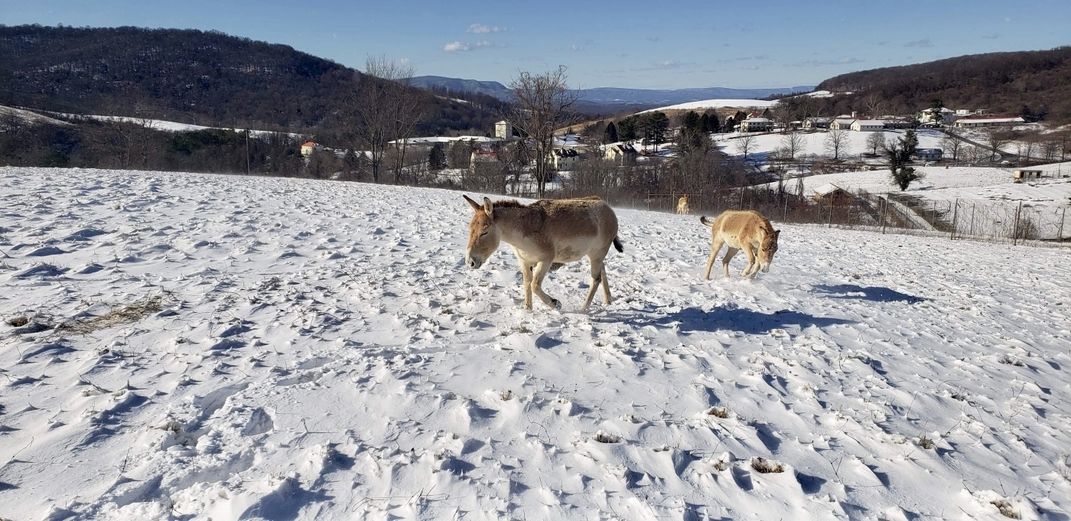NATIONAL ZOO AND CONSERVATION BIOLOGY INSTITUTE
Persian Onagers Dig the Snow
It has been a fairly mild winter at the Smithsonian Conservation Biology Institute in Front Royal, Virginia, with the exception of a pretty big snowfall Jan. 7. It was the first snow day for SCBI’s newest Persian onager foals, but there are no snow days for the animal keepers who care for these ungulates.
/https://tf-cmsv2-smithsonianmag-media.s3.amazonaws.com/blogging/featured/20200108_003mv.jpg)
It has been a fairly mild winter at the Smithsonian Conservation Biology Institute in Front Royal, Virginia, but we did have one bigger snow day on Jan. 7. It snowed almost 6 inches at some of our barns. The barn that houses our Persian onager mares and foals had a lot of snow. It was the first-ever snowfall for three of the foals.
There are no snow days for zookeepers though! While school systems are closing, we are making sure the animals are well taken care of and fed. We keep working with as little disruption as possible, making sure that all of our animals have a warm and dry place to get out of the weather (if they want) and plenty of food to eat.
Ungulates, such as onagers and other equids, maintain their body temperature by constantly eating. An ungulate's digestive system acts like a furnace. If the furnace has enough fuel (forage in this instance), then they can stay warm. So, the first step of our snow preparation is to provide all of the onagers with plenty of forage. If it seems like we might need to make the barns more cozy and insulated from the cold, we’ll put out extra bedding or heaters. There are guidelines we follow that give us parameters for what each species needs — such as heat, bedding and social dynamics.

Onagers are built to withstand colder temperatures, even though they come from a more arid, desert environment. Desert environments have both extremely high and low temperatures, and they can swing dramatically between the two. Luckily, for that reason, the onagers do well even in the winter. Most of them enjoy the colder temperatures. During the winter months, we see that the onagers and Przewalski’s (sha-VAL-ski) horses are much more active. They grow longer coats, which insulate them and help maintain their body temperatures.
Younger animals have a harder time regulating their body temperatures, but now that our onager foals are 4 and 5 months old, they have acclimated to the varying temperatures. Since we had a heavy snowfall, grass was not visible under the 3- or 4-inch layer of snow. The foals were quick to learn that they could move the snow out of the way with their noses, revealing grass just underneath. We did make sure to give them some hay, just in case they didn’t learn as quickly and needed supplement.
The onager foals are thriving and interacting with each other quite a bit. We have noticed lately that they run and play in their field with each other daily. The foals’ moms are much more accepting of their foals being farther away and of other herd members interacting with them. All three foals are still nursing and won’t wean until the summer. We will eventually separate the males from their moms, since they would naturally separate from their mothers as they mature. In the wild, male onagers leave their natal herds to build their own herds and to maintain genetic diversity. Until then, the foals are still learning from their moms about how to push the snow out of the way to get to the grass underneath.
